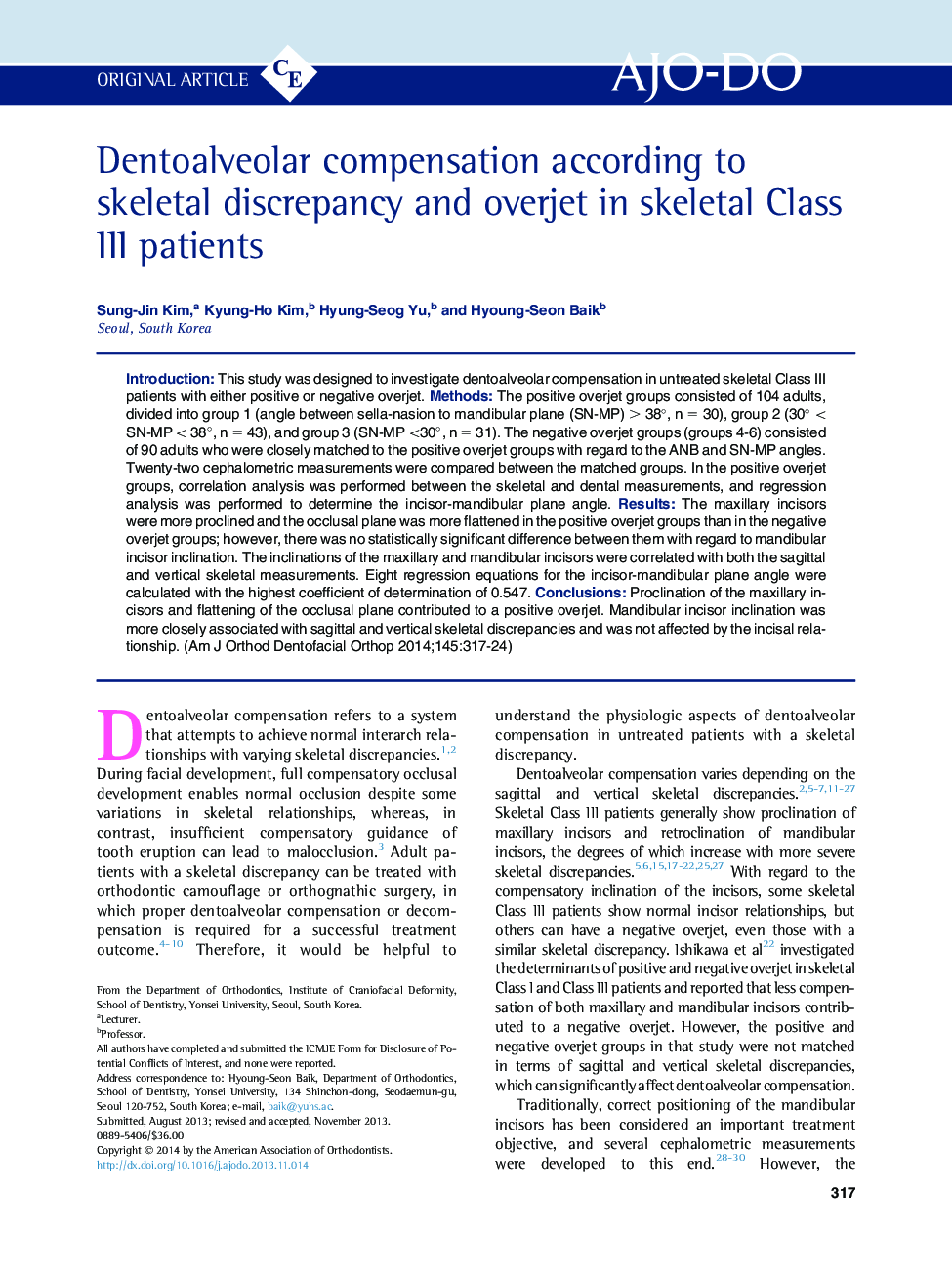| Article ID | Journal | Published Year | Pages | File Type |
|---|---|---|---|---|
| 3116586 | American Journal of Orthodontics and Dentofacial Orthopedics | 2014 | 8 Pages |
IntroductionThis study was designed to investigate dentoalveolar compensation in untreated skeletal Class III patients with either positive or negative overjet.MethodsThe positive overjet groups consisted of 104 adults, divided into group 1 (angle between sella-nasion to mandibular plane (SN-MP) > 38°, n = 30), group 2 (30° < SN-MP < 38°, n = 43), and group 3 (SN-MP <30°, n = 31). The negative overjet groups (groups 4-6) consisted of 90 adults who were closely matched to the positive overjet groups with regard to the ANB and SN-MP angles. Twenty-two cephalometric measurements were compared between the matched groups. In the positive overjet groups, correlation analysis was performed between the skeletal and dental measurements, and regression analysis was performed to determine the incisor-mandibular plane angle.ResultsThe maxillary incisors were more proclined and the occlusal plane was more flattened in the positive overjet groups than in the negative overjet groups; however, there was no statistically significant difference between them with regard to mandibular incisor inclination. The inclinations of the maxillary and mandibular incisors were correlated with both the sagittal and vertical skeletal measurements. Eight regression equations for the incisor-mandibular plane angle were calculated with the highest coefficient of determination of 0.547.ConclusionsProclination of the maxillary incisors and flattening of the occlusal plane contributed to a positive overjet. Mandibular incisor inclination was more closely associated with sagittal and vertical skeletal discrepancies and was not affected by the incisal relationship.
